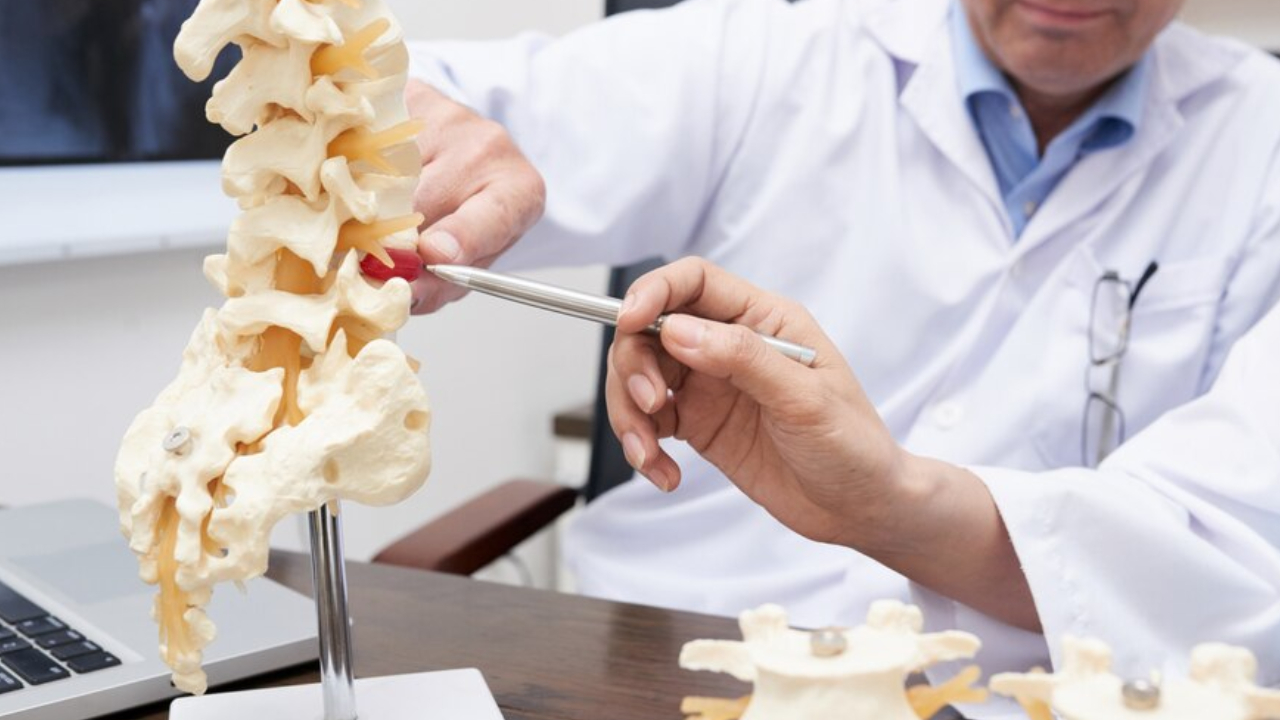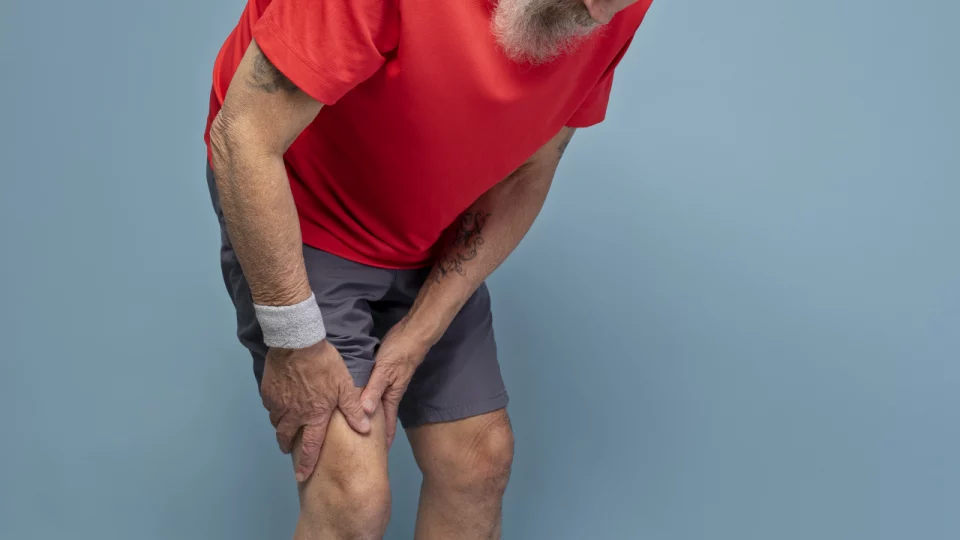Osteoporosis is a condition often called “the silent disease” due to its gradual onset and subtle symptoms. Affecting millions of people worldwide, osteoporosis compromises bone density, leading to a higher risk of fractures.
The disease is especially concerning because it remains asymptomatic until a fracture occurs, and the first break can mark the start of a downward spiral in health and mobility, potentially shortening a person’s life. Understanding the mechanisms behind osteoporosis, the ways it can be prevented, and how to maintain bone health is crucial for a healthy, fracture-free life.
Table of Contents
What is Osteoporosis?
Osteoporosis, derived from Greek words meaning “porous bones,” is a condition characterized by a loss of bone mass and density. Healthy bones are dense and strong, made up of tightly packed minerals that give them structural stability. However, in people with osteoporosis, these minerals become depleted over time, causing bones to weaken and become more susceptible to fractures. As the disease progresses, bones can become so fragile that even a minor bump or fall can result in a fracture, particularly in the hips, spine, or wrists.
Osteoporosis is generally classified into two categories:
- Primary Osteoporosis: This is the most common type, usually associated with aging. Postmenopausal women are at particular risk because hormonal changes after menopause can accelerate bone loss.
- Secondary Osteoporosis: This type is caused by other medical conditions or medications that interfere with bone health, such as rheumatoid arthritis, long-term use of corticosteroids, or conditions that affect calcium absorption.
Why is Osteoporosis Called the Silent Disease?
The term “silent disease” describes osteoporosis’s tendency to progress without obvious symptoms. Bone density can gradually decline over years or even decades without any warning signs, making it difficult to detect until a fracture occurs. This lack of symptoms makes osteoporosis particularly dangerous, as the first sign could be a broken bone or a noticeable change in posture due to weakened vertebrae in the spine. In fact, many people with osteoporosis are unaware of their condition until a low-impact fracture reveals the underlying weakness in their bones.
Fractures related to osteoporosis can have a serious impact on overall health and life expectancy. Hip fractures, in particular, are associated with significant morbidity and can drastically affect quality of life. Studies show that individuals with a hip fracture have an increased risk of mortality in the months and years following the injury. This makes early detection and proactive prevention critical to managing osteoporosis.
Understanding Bone Health and the Risk Factors of Osteoporosis
Bones are dynamic structures that continuously undergo a process called bone remodeling. This involves two main types of cells: osteoclasts, which break down old or damaged bone tissue, and osteoblasts, which build new bone tissue. In young adults, the rate of bone formation typically matches the rate of bone breakdown. However, as people age, bone breakdown begins to outpace bone formation, leading to a gradual decrease in bone density.
Certain factors can accelerate this loss of bone density, making some individuals more susceptible to osteoporosis than others. Here are some of the primary risk factors for osteoporosis:
- Age: Bone density peaks around age 30, and then begins to decline. The risk of osteoporosis increases significantly in older adults, especially after age 50.
- Gender: Women are more likely to develop osteoporosis than men, particularly after menopause. Lower levels of estrogen, a hormone that helps maintain bone density, contribute to faster bone loss in women.
- Genetics: Family history plays a role in bone health. If a close family member has osteoporosis or experienced fractures, the risk of developing osteoporosis is higher.
- Body Size: Individuals with smaller body frames or low body weight have less bone mass to lose, increasing their risk of osteoporosis.
- Lifestyle Choices: Smoking, excessive alcohol consumption, and a sedentary lifestyle can all contribute to bone loss.
- Dietary Deficiencies: Inadequate intake of calcium and vitamin D, both of which are essential for bone health, can lead to weakened bones.
- Certain Medications: Long-term use of corticosteroids and some anticonvulsants can negatively affect bone density.
Understanding these risk factors is essential in assessing personal risk and taking proactive measures to protect bone health.
The Consequences of Osteoporosis-Related Fractures
Osteoporosis-related fractures, particularly in the hip and spine, can have profound consequences. A hip fracture often requires surgery and may lead to a prolonged period of immobility. This can cause a decline in muscle strength and cardiovascular health, along with an increased risk of complications such as infections, blood clots, and even mortality. In fact, up to 20% of people over the age of 50 who suffer a hip fracture die within a year due to related complications.
Spine fractures, while sometimes less immediately dramatic, can also severely affect a person’s quality of life. These fractures can lead to chronic back pain, a loss of height, and a stooped posture known as kyphosis. This altered posture can limit mobility, impair lung function, and reduce overall physical function, affecting a person’s independence and ability to engage in everyday activities.
Given these risks, prevention of osteoporosis and related fractures should be a health priority, especially as people age.

Prevention Strategies to Keep Bones Healthy
- Ensure Sufficient Calcium Intake: Calcium is a primary building block of bone tissue. Adults should aim for a daily intake of about 1,000 milligrams, while women over 50 and men over 70 should increase this to 1,200 milligrams. Good dietary sources of calcium include dairy products (such as milk, cheese, and yogurt), leafy green vegetables (like kale and broccoli), almonds, and fortified foods.
- Vitamin D is Essential: Vitamin D is crucial for calcium absorption. Without sufficient vitamin D, the body cannot absorb enough calcium, regardless of dietary intake. Sunlight is a natural source of vitamin D, but in cases of limited sun exposure or during winter months, supplements may be necessary. The recommended daily intake of vitamin D varies, but generally falls around 600-800 IU for adults.
- Engage in Weight-Bearing Exercise: Exercise stimulates bone remodeling and helps improve bone density. Weight-bearing exercises, such as walking, jogging, and strength training, put stress on bones, signaling the body to increase bone formation. Resistance exercises, including weightlifting, can be particularly effective in strengthening bones and muscles around major joints. Incorporating these exercises into a weekly routine can significantly reduce the risk of fractures.
- Limit Alcohol and Avoid Smoking: Both smoking and excessive alcohol consumption are associated with increased bone loss. Smoking impairs the blood supply to bones and reduces calcium absorption, while alcohol can interfere with the body’s ability to balance bone formation and resorption.
- Maintain a Healthy Body Weight: Maintaining a healthy body weight is essential for bone health. Being underweight increases the risk of bone loss and fractures, while being overweight can lead to an increased risk of fractures in areas that bear body weight, such as the hip and spine. Eating a balanced diet and maintaining an appropriate body weight can support overall bone health.
- Consider Bone Density Testing: Bone density testing, often performed using dual-energy X-ray absorptiometry (DXA), is the standard method for diagnosing osteoporosis. This test measures the density of minerals in the bones and can provide an indication of fracture risk. It is particularly recommended for women over 65 and men over 70, though younger individuals with risk factors may also benefit from testing.
Medications for Osteoporosis Prevention and Treatment
In cases where lifestyle changes alone are insufficient to prevent bone loss, medications may be prescribed to help maintain or improve bone density. These medications include:
- Bisphosphonates: These are the most common drugs used to treat osteoporosis. They work by slowing down the bone breakdown process, allowing the bones to maintain more density.
- Hormone Therapy: Estrogen replacement therapy can help prevent bone loss in postmenopausal women, although it is usually prescribed only when other treatments are ineffective due to potential risks.
- Selective Estrogen Receptor Modulators (SERMs): These drugs mimic the effects of estrogen on bone tissue without the associated risks of hormone therapy.
- Parathyroid Hormone Analogues: For those with severe osteoporosis, parathyroid hormone analogues can stimulate bone formation and increase bone density.
It’s essential to consult with a healthcare provider before starting any medication, as they come with their own set of risks and benefits. The choice of medication depends on an individual’s age, gender, fracture history, and overall health profile.
Emerging Research and Future Directions
Research on osteoporosis continues to evolve, with studies exploring novel therapies aimed at promoting bone growth and reducing fractures. These include new biologic medications that target specific bone-related pathways and lifestyle modifications based on genetic predispositions to osteoporosis. Personalized medicine, which tailors prevention and treatment strategies to each individual’s genetic and lifestyle factors, is also an exciting area of exploration.a
